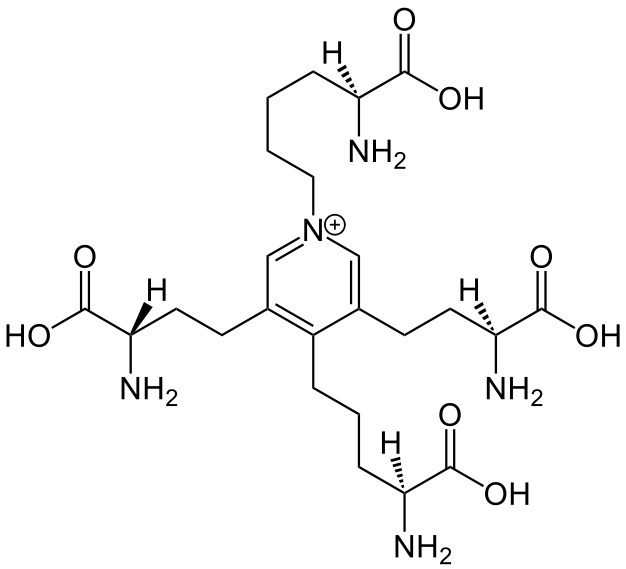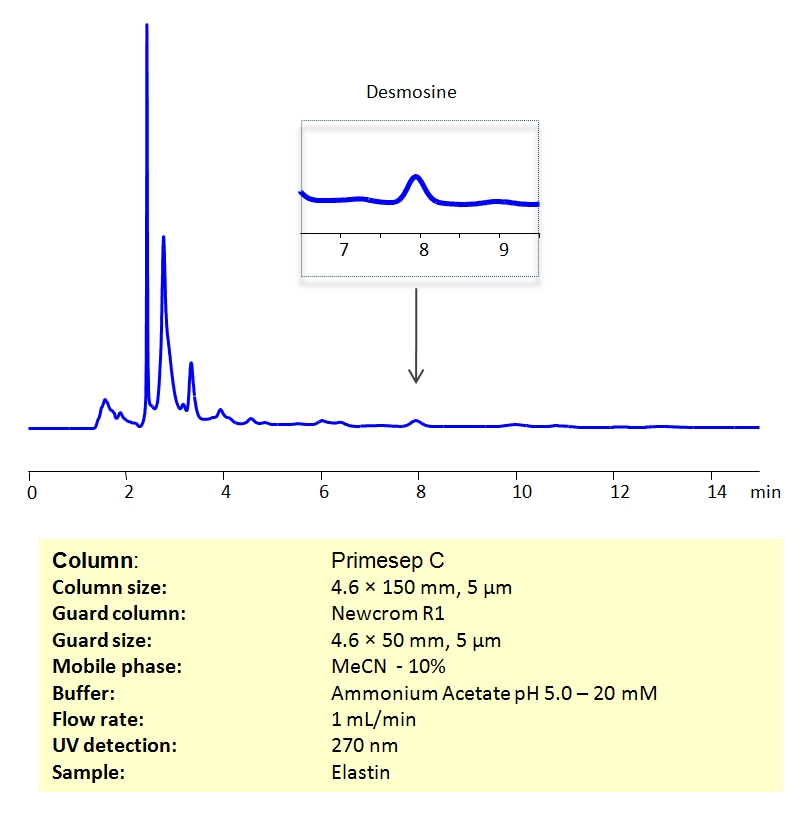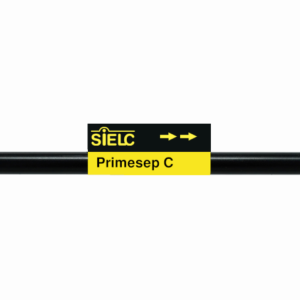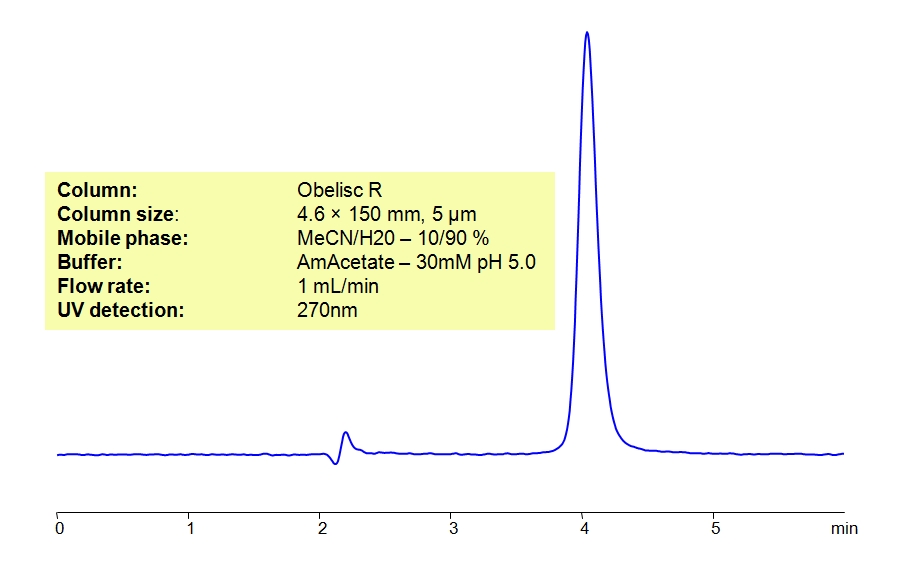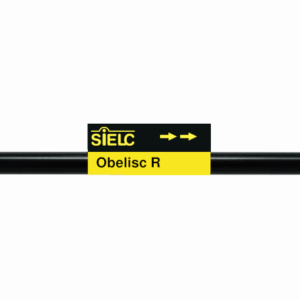| CAS Number | 11003-57-9 |
|---|---|
| Molecular Formula | C24H40N5O8 |
| Molecular Weight | 526.29 |
| InChI Key | VEVRNHHLCPGNDU-MUGJNUQGSA-O |
| LogP | -7.26 |
| Synonyms |
Applications:
UV-Vis Spectrum of Desmosine
July 31, 2025
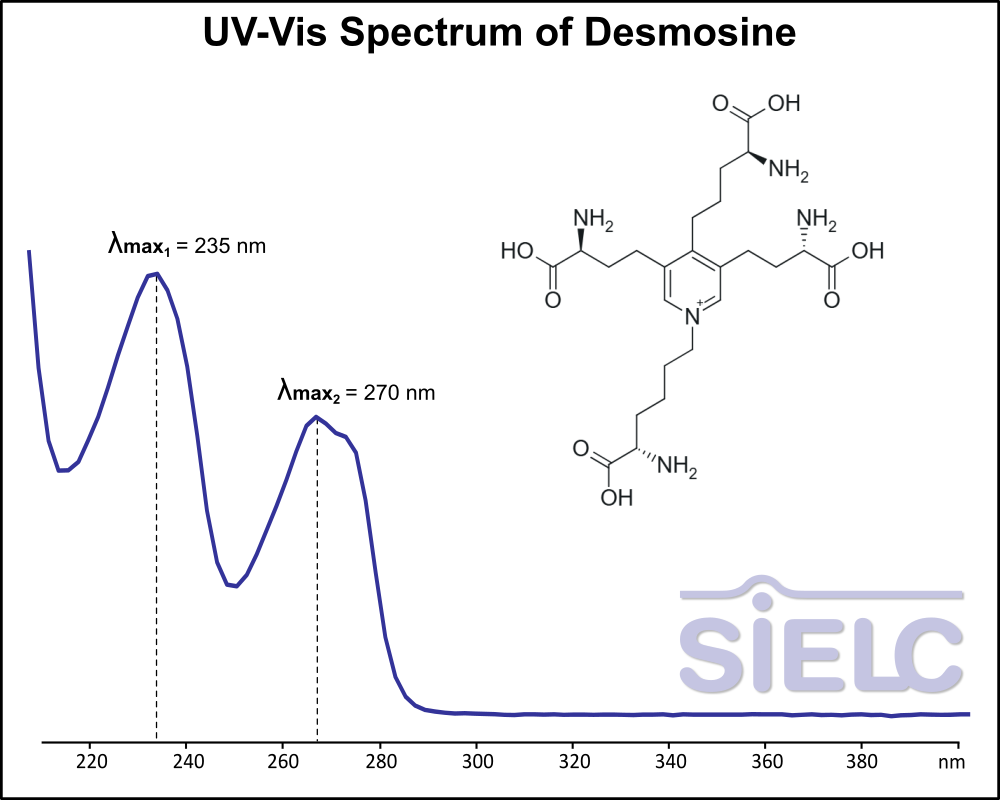
For optimal results in HPLC analysis, it is recommended to measure absorbance at a wavelength that matches the absorption maximum of the compound(s) being analyzed. The UV spectrum shown can assist in selecting an appropriate wavelength for your analysis. Please note that certain mobile phases and buffers may block wavelengths below 230 nm, rendering absorbance measurement at these wavelengths ineffective. If detection below 230 nm is required, it is recommended to use acetonitrile and water as low UV-transparent mobile phases, with phosphoric acid and its salts, sulfuric acid, and TFA as buffers.
For some compounds, the UV-Vis Spectrum is affected by the pH of the mobile phase. The spectra presented here are measured with an acidic mobile phase that has a pH of 3 or lower.

HPLC Determination of Desmosine on Primesep C Column
January 6, 2021
HPLC Method for Desmosine on Primesep C by SIELC Technologies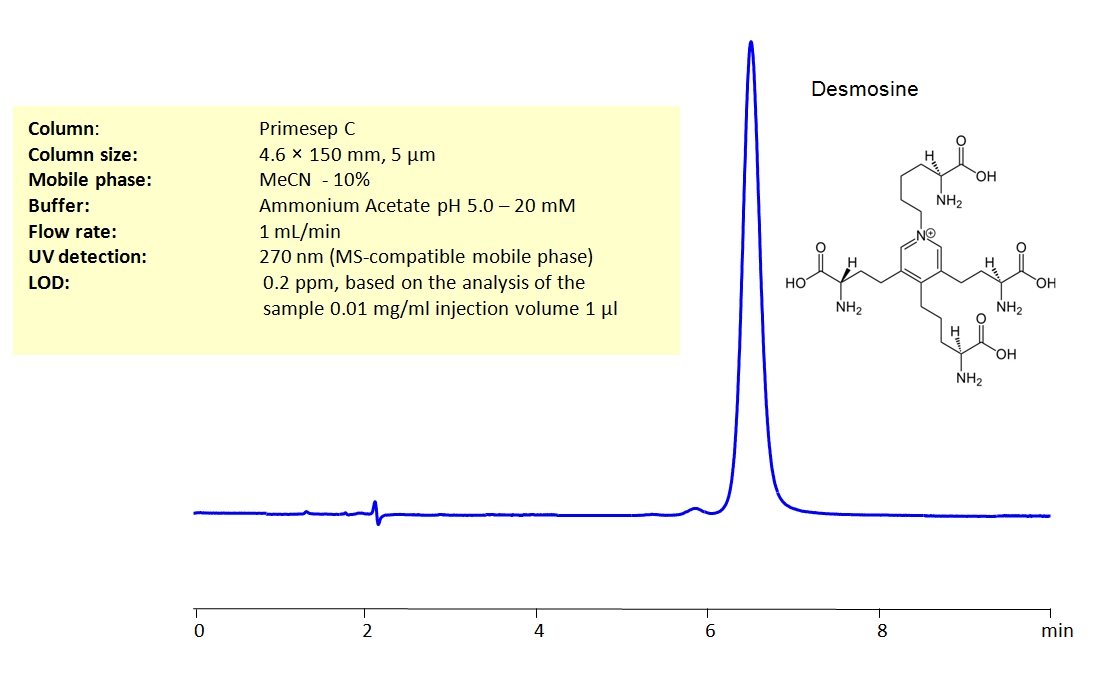
High Performance Liquid Chromatography (HPLC) Method for Analysis of Desmosine.
Desmosine and isodesmosine are unique amino acids found in elastin, a protein in connective tissue such as elastic arteries, lungs, and skin. Both can be used as specific biological markers for the degradation of mature cross-linked elastin.
Desmosine is pyridinium-based amino acid derivative with C24H40N5O8+ molecular formula. It is found exclusively in elastin. Elevated levels of desmosine in urine can be a symptom of Chronic Obstructive Pukmonary Disease (COPF), so it can be used as a biomarker when monitoring progression and aiding in a potential diagnosis.
Desmosine can be detected at 270nm using Primesep C mixed-mode reversed-phase cation-exchange column and a mobile phase consisting of acetonitrile (ACN), and water with Ammonium acetate buffer.
| Column | Primesep C, 4.6 x 150 mm, 5 µm, 100 A, dual ended |
| Mobile Phase | MeCN – 10% |
| Buffer | Ammonium Acetate pH 5.0 – 20 mM |
| Flow Rate | 1.0 mL/min |
| Detection | UV 270 nm |
| Column | Primesep C, 4.6 x 150 mm, 5 µm, 100 A, dual ended |
| Guard | Newcrom R1 4.6×50 mm, 5µm, 100A, |
| Mobile Phase | MeCN – 10% |
| Buffer | Ammonium Acetate pH 5.0 – 20 mM |
| Flow Rate | 1.0 mL/min |
| Detection | UV 270 nm |
| Class of Compounds |
Aminoacid, Poly-amino acid |
| Analyzing Compounds | Desmosine |
Application Column
Primesep C
Column Diameter: 4.6 mm
Column Length: 150 mm
Particle Size: 5 µm
Pore Size: 100 A
Column options: dual ended

HPLC Method for Analysis of Desmosine
March 16, 2018
HPLC Method for Desmosine on Obelisc R by SIELC Technologies
High Performance Liquid Chromatography (HPLC) Method for Analysis of Desmosine
Desmosine is pyridinium-based amino acid derivative with C24H40N5O8+ molecular formula. It is found exclusively in elastin. Elevated levels of desmosine in urine can be a symptom of Chronic Obstructive Pukmonary Disease (COPF), so it can be used as a biomarker when monitoring progression and aiding in a potential diagnosis.
Desmosine can be retained and analyzed using the Obelisc R stationary phase column. The analysis utilizes an isocratic method with a simple mobile phase consisting of water and acetonitrile (MeCN) with an ammonium acetate buffer. Detection is performed using UV.
| Column | Obelisc R, 4.6 x 150 mm, 5 µm, 100 A, dual ended |
| Mobile Phase | MeCN – 10% |
| Buffer | AmAcetate – 30 mM pH 5.0 |
| Flow Rate | 1.0 ml/min |
| Detection | UV 270nm |
| Class of Compounds | Amino Acid |
| Analyzing Compounds | Desmosine |
Application Column
Obelisc R
Column Diameter: 4.6 mm
Column Length: 150 mm
Particle Size: 5 µm
Pore Size: 100 A
Column options: dual ended

